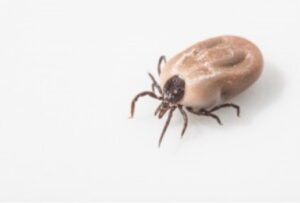Ticks are external parasites, living on the blood of mammals, birds, and occasionally reptiles and amphibians. Ticks are vectors of a number of diseases, including Lyme Disease.
Ticks are blood-feeding parasites that are often found in tall grass where they will wait to attach to a passing host. A tick will attach itself to its host by inserting its mandibles and feeding tube into the skin. The mandibles are covered with curved teeth and serve as a hammer.
Physical contact is not the only method of transportation for ticks. Ticks can’t jump or fly. Some species stalk the host from ground level, emerging from cracks or crevices located in the woods or even inside a home or kennel, where infestations of “seed ticks” (the six-legged stage of newborn ticks) can attack in numbers up to 30,000 at a time. Weak or elderly dogs, puppies, and cats are particularly endangered and can die from anemia from a sudden influx of seed ticks. Seed ticks also attack horses, cattle, moose, lions and other mammals, causing anemia, various diseases, paralysis and even death. Such infestations can be difficult to detect until thousands have attached themselves to an animal and eradication can be difficult.
Mature ticks are harder to see. Frequent grooming and chemicals for tick control may control the spread of seed ticks and adults.
Changes in temperature and day length are some of the factors signaling a tick to seek a host. Ticks can detect heat emitted or carbon dioxide respired from a nearby host. They will generally drop off the animal when full, but this may take several days. In some cases, ticks will live for some time on the blood of an animal. Ticks are more active outdoors in warm weather, but can attack a host at any time.
Ticks can be found in most wooded or forested regions throughout the world. They are especially common in areas where there are deer trails or human tracks. Ticks are especially abundant near water, where warm-blooded animals come to drink, and in meadows wherever shrubs and brush provide woody surfaces and cover. Below are some of our most frequently asked questions and basic tick facts that will help educate you. However, finding our tick control experts located near you will be your best bet to combat these parasites.
